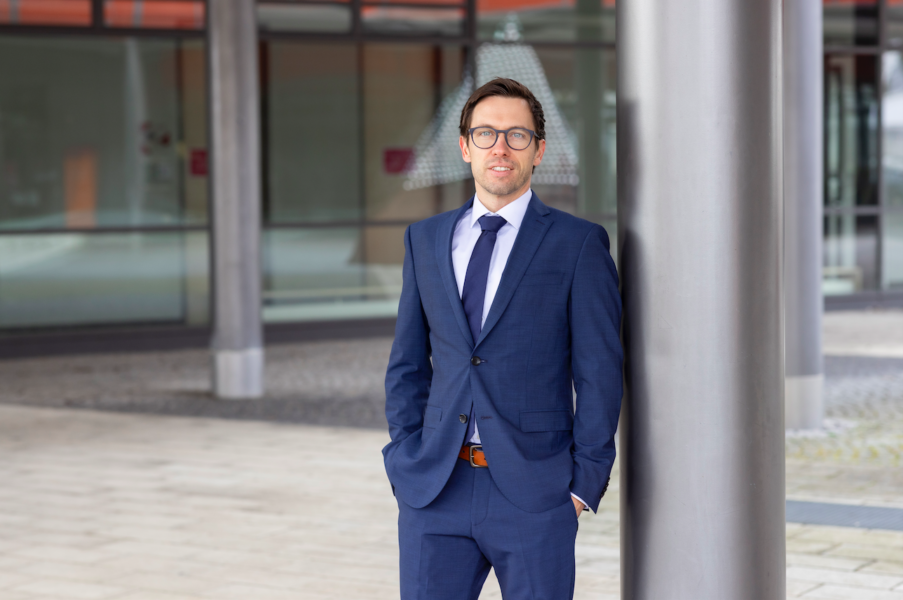Power of Choice: Empowering physicians with a range of innovative hygiene solutions
In endoscopy, hygiene is both a challenge and a priority. By providing solutions that reduce the risk of infections, enhance clinical results, improve provider experience, and boost healthcare productivity, PENTAX Medical is committed to addressing hygiene challenges in endoscopy. Harald Huber, Global Vice President for Product and Category Management at PENTAX Medical, emphasizes how important it is to provide physicians a meaningful mix of innovative hygiene solutions.
IH: Mr. Huber, which hygiene challenges do endoscopy practitioners face on a regular basis?
Harald Huber: The drying of the endoscope is frequently underestimated in clinical practice, which can lead to problems with hygiene and reprocessing procedures. Indeed, endoscopes need to go through a thorough reprocessing process before use, including manual pre-cleaning, washing and disinfecting, drying, and storing. To ensure hygiene and prevent any contamination, these actions must be carefully followed and carried out.
In parallel, concerns related to sustainability are increasing, since the healthcare industry is a major emitter of greenhouse gases emissions, demonstrating the urgency to offer treatment that best protects patients and the planet.
IH: What does this mean in practice?
HH: Endoscopy encompasses a broad range of patients with different conditions, many of whom present hygiene challenges. A one-size-fits-all product can simply not serve those different patients and different medical procedures. This is why PENTAX Medical is committed to provide physicians with the solutions they need to assess each situation and choose what is best for the patient on an individual basis.
We do not want to push doctors and patients towards one particular solution. The ultimate goal is to empower doctors with a range of equipment to treat each and every patient in the most optimal way, in order to minimise the risk of infection. We call that the Power of Choice (PoC). The PoC enables us to best treat each patient, instead of letting the product decide what’s best for the patient – and the planet. In this way, they can ultimately make smarter, more sustainable choices.
Harald Huber, Global Vice President for Product and Category Management at PENTAX Medical
IH: What types of hygiene solutions are offered by the Power of Choice?
HH: The Power of Choice is a meaningful mix of reusable, semi-disposable and single-use products, combined with advanced cleaning solutions, which we believe provides the best clinical, economic and environmental benefit to our customers.
Our main pioneering hygiene solutions are the PENTAX Medical DEC and the PlasmaTYPHOON. The recently launched PENTAX Medical Slim DEC Duodenoscope (ED32-i10; OE-A65), uniquely serves paediatric patients and adults with narrow anatomies. It also provides consistent therapeutic performance, while ensuring a reduced risk of cross-contamination and outstanding visualisation.
The PlasmaTYPHOON is a device for ultra-fast drying of endoscope channels and storage in a single use recipient, the PlasmaBAG. The newest generation PlasmaTYPHOON+ dries even faster than before, in 1-3 minutes compared to several hours in a regular drying cabinet, and offers a more intuitive user experience to make the processes safer and easier for reprocessing staff. This system accelerates endoscope reprocessing by substantially reducing drying times from hours to just minutes, while maintaining the disinfected state of endoscopes for up to 31 days.
Aside from gastrointestinal endoscopy, bronchoscopy is a clinical area that also holds a high risk of infection – and where hygiene considerations are high. The PENTAX Medical ONE Pulmo single-use bronchoscope was developed to support physicians in providing the highest quality care even in the most urgent and critical situations.
However, studies, including life cycle assessments, are urgently needed to better assess their environmental viability.
IH: How does PENTAX Medical strike a balance between environmental concerns and patient safety while also improving patient outcomes?
HH: We’re taking ambitious measures to make endoscopy more sustainable, by incorporating sustainable thinking in every aspect of our value chain. For example, in product development, we aim to build our endoscopes in a way that the most cost-intensive parts can be reused, while the risky parts are disposable. This reduces the environmental impact, but still makes the device safe for use in patients. In some situations, single-use endoscopes are preferable from a risk perspective even though they have a greater impact on the environment. To let doctors make the final medical decision regarding what is best for the patient in such situations, we simply want to offer a product that looks, feels, and functions like a reusable product. Patient safety remains our primary goal, against which sustainability ambitions are weighted in the development of innovative products.
• Find more information about sustainability in endoscopy in Pentax’s latest podcast episode or on PENTAX Medical’s hygiene commitment webpage.


